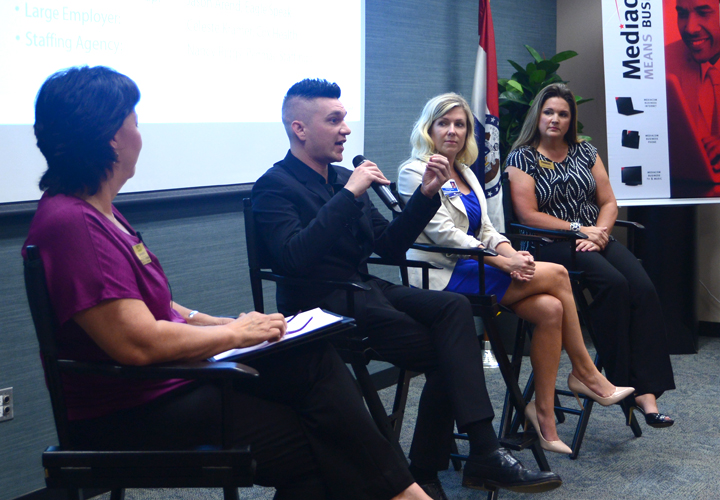Addressing workforce needs without big expenses

Talk to nearly any business about their biggest issues, and you’re likely to hear a common theme: Finding the right employees, in sufficient numbers, is a huge challenge.
It’s why the Chamber has set workforce development as one of its four Strategic Areas of Focus. But how do businesses address the ongoing problem without busting their budget?
That was the focus of the Chamber’s August 8 edition of 60 Minutes to Success: Luring Top-Notch Employees in a Competitive Market. Three local business leaders spoke about some of the low-cost methods their own companies use to attract, retain and develop the employees they need to grow.
One important method is by developing and nurturing a company culture that draws people in and encourages them to stay.
“Finding people with skills is important, but the cultural fit is important, too,” said Celeste Cramer, system director of recruitment and retention for CoxHealth. “A lot of things are teachable, but if an employee is toxic internally, we have turnover issues.”
For Nancy Riggs, regional vice president at Penmac Staffing Services, the key is finding employees who have “a passion for people.”
“Applicants call us, and clients call us every day, so we need employees who can connect with people,” she said. “I’m not as worried about whether they can type a certain number of words per minute. It can be challenging to find the exact right skill set for every job, so find the right person first and train the skills to match.”
Culture is even more important for a small business or a startup. Jason Arend, co-founder of Eagle Speak, said the employees at his company all wear many hats at once, so it’s crucial that each employee is a good cultural fit. And, he added, the fit can change as a company grows or changes.
“We tried to form the foundations of our culture from the beginning, and as you grow, maintaining that culture is the challenge,” he said. “The person that can manage 10 people is not the same person that can scale that company from 10 people to 100.”
Cramer said that once people are on board, her organization has programs that encourage people to develop skills and grow professionally at relatively little cost to the organization, such as leadership education training. Those programs also help with succession planning. “When a new leadership position is open,” she said, “people already have the training and the skills, so we can promote from within – and there is no cost to that.”
Nontraditional perks and benefits can take many forms without large economic outlays. For Arend’s company, a startup that has put less emphasis on traditional benefits like full health insurance, it means things like helping to offset the cost of employees purchasing their own insurance or investing in the best computers and equipment for employees to use in the office – to improve both productivity and morale.
For Riggs and Penmac, which does offer traditional benefits, perks take the form of more unusual items such as paid days off for birthdays and wellness incentives.
“My candidate pool is small enough,” she said. “When you don’t offer benefits, it really narrows the list of people that are willing to take that job.”

